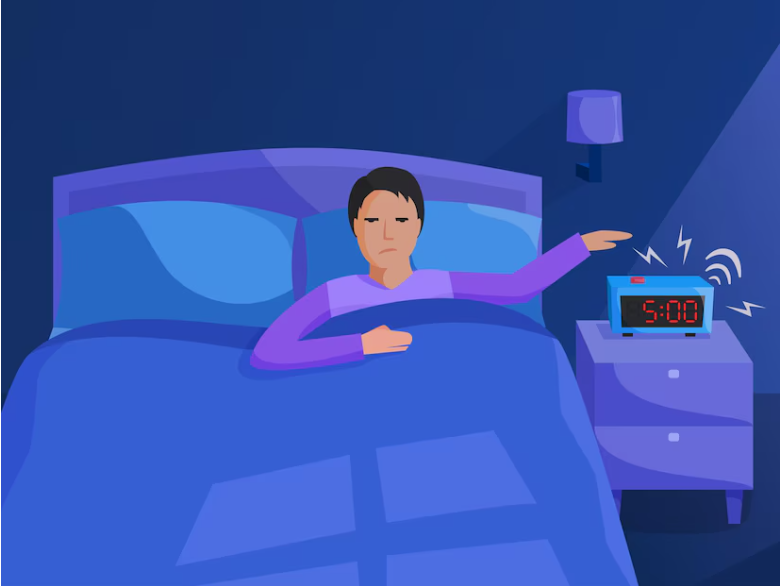
What are the safe sleep instructions:- Achieving restful and safe sleep is essential for overall health and well-being. By following established guidelines and incorporating effective strategies, individuals can enhance their sleep quality and safety. This comprehensive guide provides detailed instructions, expert recommendations, and additional tips to foster healthy sleep habits.
Contents
Understanding Safe Sleep Practices
Safe sleep practices are designed to minimize risks associated with sleep, particularly for infants, and to promote restorative rest for individuals of all ages. Implementing these practices involves creating an environment conducive to sleep and adopting habits that support consistent and high-quality rest.
Safe Sleep Instructions for Infants
Infants are particularly vulnerable during sleep; thus, adhering to safe sleep guidelines is crucial to reduce the risk of sudden infant death syndrome (SIDS) and other sleep-related incidents.
1. Always Place Babies on Their Backs to Sleep
- Supine Position: Placing infants on their backs for all sleep times significantly reduces the risk of SIDS. This position ensures that the airway remains open and unobstructed.
- Consistency: Ensure that caregivers, including family members and childcare providers, are informed and consistent in placing the baby on their back to sleep.
2. Use a Firm and Flat Sleep Surface
- Approved Sleep Spaces: Utilize a crib, bassinet, or portable play yard that meets current safety standards. The mattress should be firm and covered with a fitted sheet.
- Avoid Inclined Surfaces: Products that position the baby at an incline are not safe for sleep and can increase the risk of suffocation.
3. Keep the Sleep Area Free of Soft Objects and Loose Bedding
- Minimalist Approach: Remove pillows, blankets, stuffed toys, and crib bumpers from the sleep area. These items can pose suffocation hazards.
- Appropriate Attire: Dress the baby in sleep clothing, such as wearable blankets, to keep them warm without the need for loose blankets.
4. Share a Room, Not a Bed
- Room Sharing: Place the baby’s sleep area in the same room where you sleep, but on a separate surface. Room sharing can decrease the risk of SIDS by up to 50%.
- Avoid Bed Sharing: Sharing the same sleeping surface with an infant increases the risk of sleep-related deaths and is not recommended.
Read Also:- Sleep tips: 6 steps to better sleep
5. Maintain a Smoke-Free Environment
- Prenatal and Postnatal Exposure: Exposure to smoke increases the risk of SIDS. Ensure that the baby’s environment is smoke-free during pregnancy and after birth.
6. Consider Offering a Pacifier at Nap Time and Bedtime
- Potential Protective Effect: Offering a pacifier has been associated with a reduced risk of SIDS. If breastfeeding, introduce the pacifier after breastfeeding is well-established.
- Pacifier Safety: Do not force the baby to take a pacifier, and avoid attaching it to clothing or placing it back in the mouth once the baby falls asleep.
7. Avoid Overheating and Head Covering
- Regulate Room Temperature: Keep the room at a comfortable temperature to prevent overheating, which can increase the risk of SIDS.
- Appropriate Clothing: Dress the baby in light sleep clothing and avoid covering the head.
8. Encourage Supervised, Awake Tummy Time
- Developmental Benefits: Supervised tummy time while the baby is awake helps develop strong neck and shoulder muscles and prevents flat spots on the head.
- Gradual Increase: Start with short periods and gradually increase the duration as the baby becomes more comfortable.
Safe Sleep Tips for Adults
Adults also benefit from adopting safe sleep practices to enhance sleep quality and overall health.
1. Establish a Consistent Sleep Schedule
- Regular Sleep and Wake Times: Going to bed and waking up at the same times each day helps regulate the body’s internal clock, leading to better sleep quality.
- Prioritize Sleep: Aim for 7-9 hours of sleep per night, as recommended for most adults.
2. Create a Restful Sleep Environment
- Comfortable Bedding: Invest in a supportive mattress and comfortable pillows to promote restful sleep.
- Optimal Room Conditions: Keep the bedroom dark, quiet, and cool. Consider using blackout curtains, earplugs, or white noise machines to minimize disruptions.
3. Limit Exposure to Screens Before Bedtime
- Reduce Blue Light Exposure: The blue light emitted by phones, tablets, computers, and TVs can interfere with melatonin production, affecting sleep quality.
- Implement a Screen Curfew: Aim to turn off electronic devices at least one hour before bedtime to allow the body to prepare for sleep.
4. Be Mindful of Food and Drink Intake
- Avoid Stimulants: Refrain from consuming caffeine and nicotine in the hours leading up to bedtime, as they can disrupt sleep patterns.
- Moderate Alcohol Consumption: While alcohol may induce drowsiness, it can interfere with the sleep cycle and reduce sleep quality.
5. Engage in Regular Physical Activity
- Exercise Benefits: Regular physical activity can help you fall asleep faster and enjoy deeper sleep.
- Timing Matters: Avoid vigorous exercise close to bedtime, as it may have a stimulating effect.
6. Manage Stress and Anxiety
- Relaxation Techniques: Incorporate practices such as deep breathing exercises, meditation, or gentle yoga to unwind before bed.
- Journaling: Writing down thoughts or to-do lists can help clear the mind and reduce nighttime anxiety.
Additional Tips for Enhancing Sleep Quality
- Limit Naps: Long daytime naps can interfere with nighttime sleep. If you choose to nap, keep it short (20-30 minutes) and avoid napping late in the day.
- Exposure to Natural Light: Spending time outdoors during daylight hours helps regulate the sleep-wake cycle.
- Evaluate Sleep Positions: Certain sleep positions can alleviate or exacerbate conditions like back pain or sleep apnea. Find a position that promotes comfort and proper alignment.
- Seek Professional Advice: If sleep problems persist, consult a healthcare provider to rule out underlying conditions such as sleep apnea or insomnia.
Extra Tips for Couples: The ‘Doppelbett’ Method
- Individual Comfort: Using two single mattresses within the same bed frame allows each partner to choose a mattress that suits their comfort preferences, reducing disturbances.
- Separate Bedding: Having individual duvets can prevent blanket tug-of-war, ensuring both partners remain comfortable throughout the night.
- Enhanced Sleep Quality: This method accommodates different sleep schedules and movements, promoting uninterrupted sleep for both partners.
Frequently Asked Questions (FAQ)
Q1: How much sleep do adults need?
A1: Adults should aim for 7-9 hours of sleep per night to maintain optimal health and well-being.
Q2: What is the best sleep position for adults?
A2: The best sleep position varies by individual. However, sleeping on your back with proper neck support is generally recommended for spinal alignment.
Q3: How can I create a sleep-friendly environment?
A3: Keep your bedroom dark, quiet, and cool. Use blackout curtains, white noise machines, and maintain a comfortable room temperature to promote restful sleep.
Conclusion
Establishing and maintaining safe sleep practices is essential for promoting health and well-being across all age groups. For infants, adhering to guidelines such as placing them on their backs to sleep, using a firm and flat sleep surface, and keeping the sleep area free of soft objects and loose bedding significantly reduces the risk of sudden infant death syndrome (SIDS) and other sleep-related incidents. Room sharing without bed sharing is also recommended, as it can decrease the risk of SIDS by as much as 50% and is safer than bed sharing.
For adults, cultivating a consistent sleep schedule, creating a restful environment, and managing stress are pivotal steps toward achieving restorative sleep. Techniques such as Cognitive Behavioral Therapy for Insomnia (CBT-I) have been shown to effectively address chronic sleep issues by helping individuals develop healthier sleep habits.
In certain cases, healthcare providers may prescribe medications like Zopiclone to manage insomnia. Zopiclone is a non-benzodiazepine hypnotic agent used for the short-term treatment of insomnia. It works by modulating benzodiazepine receptors to promote sleep.
However, it’s crucial to use such medications under the guidance of a qualified healthcare professional, as they are typically recommended for short-term use and may have side effects.
By integrating these safe sleep practices and seeking professional guidance when necessary, individuals can enhance their sleep quality and overall health. Remember, the foundation of good sleep lies in consistent habits and a supportive environment tailored to your specific needs.
Author Details




Medical content by qualified psychiatrists
Our editorial policy

Zopiclone precautions Read our potential abuse notice

Looking for a seller? Locate the best Zopiclone vendor






